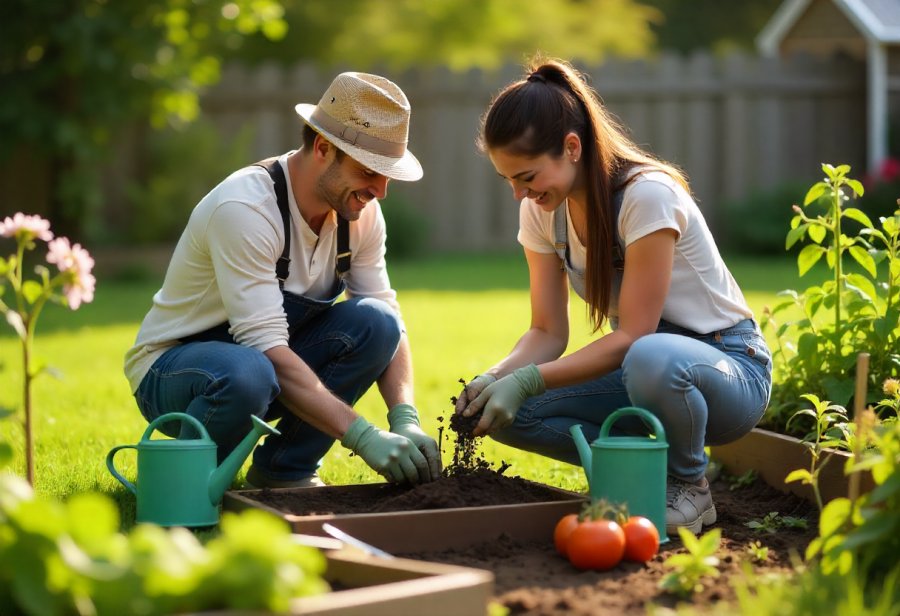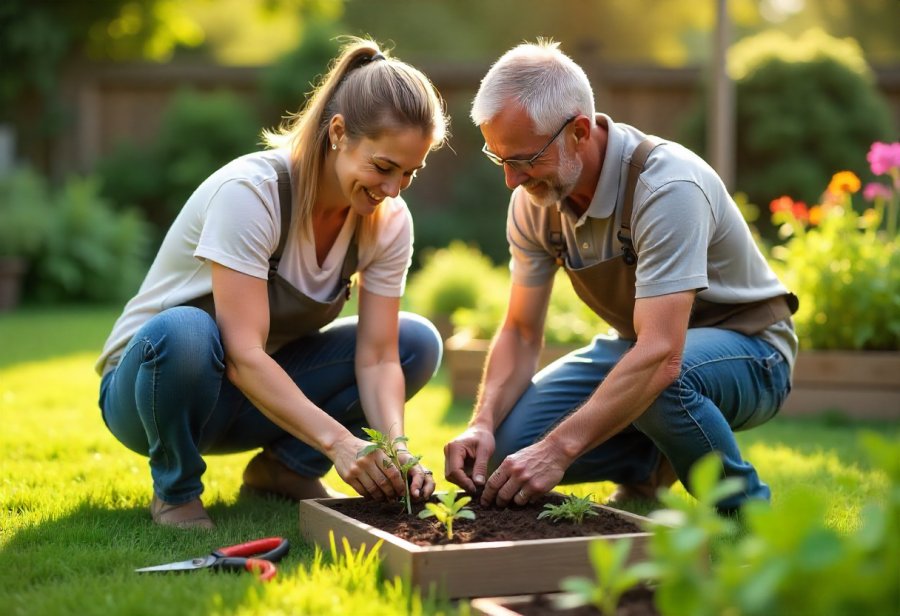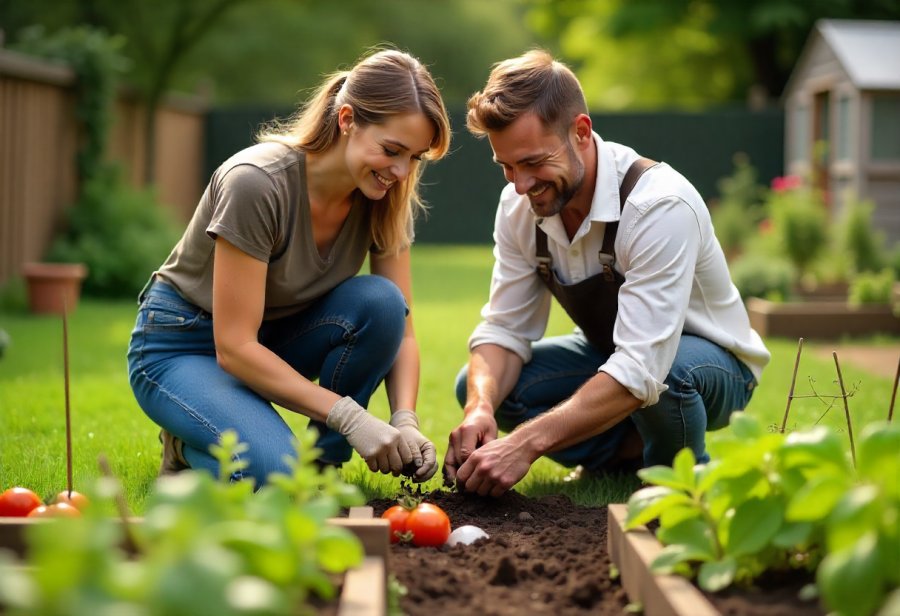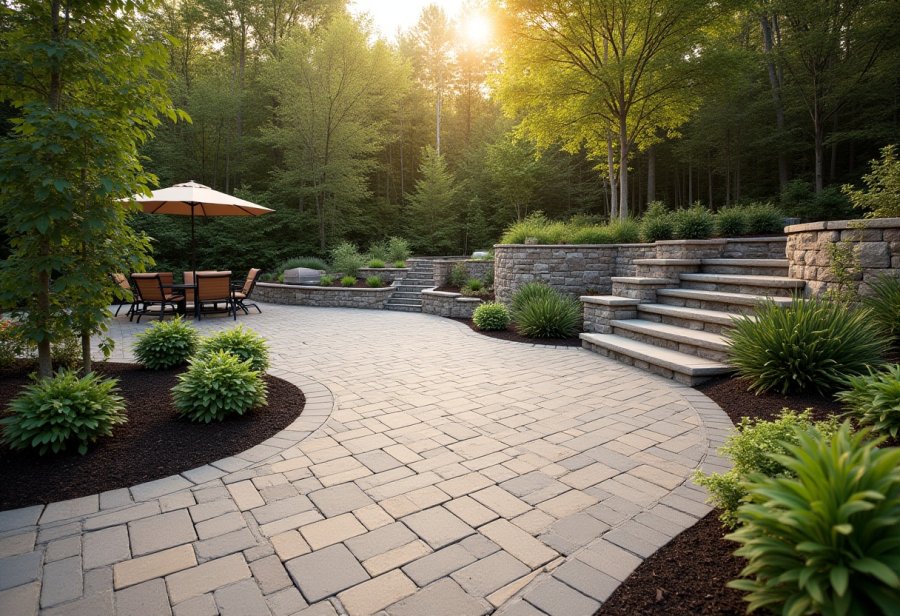In an age dominated by digital distractions, can tending a garden together become a powerful tool for deepening human bonds and healing? ‘Growing Together’ explores how shared outdoor activities foster trust, communication, and emotional resilience, transforming gardening from a simple hobby into a ritual of love and patience. Through historical insights and modern trends, it reveals how planting and tending can serve as acts of community and recovery across cultures and generations. Today’s diverse gardening initiatives—from urban farms to therapeutic programs—illustrate a collective movement toward connection and well-being. The narrative challenges us to consider how small routines, intentional routines, and innovative technology can turn outdoor care into a shared journey that nurtures relationships as much as plants. As we look to the future, can sustainable, community-driven gardening continue to bridge gaps, combat isolation, and strengthen our collective resilience in an ever-changing world?

Rekindling Human Connection Through Shared Gardening
In a world dominated by screens and constant notifications, finding genuine human connection can feel increasingly elusive. We often spend our days glued to devices, scrolling through feeds or responding to endless emails, leaving little room for meaningful interactions. Yet, amidst this digital noise, gardening offers a simple, grounding alternative—an activity rooted in presence, patience, and shared effort.
When people work together outdoors, planting seeds or watering rows, something shifts. The act of caring for life side by side creates a natural flow of conversation and companionship. These moments foster trust and open communication, laying the groundwork for deeper emotional bonds. Over time, routines form—whether watering in the morning or harvesting in the evening—that reinforce teamwork and a sense of shared purpose.
Gardening isn’t just about growing plants; it’s a form of therapy that nurtures mental well-being. The physical labor involved in digging, tending, and harvesting can reduce stress, promote mindfulness, and boost mood. When shared with others—family, friends, or neighbors—these benefits multiply, turning outdoor work into a space of comfort and mutual support. It’s a quiet strength that helps build resilience and emotional healing.
This timeless activity is deeply woven into the fabric of many cultures and communities. Historically, communal gardens and shared plots have served as gathering spaces—places where people connect, share resources, and reinforce social bonds. From ancient societies to modern therapeutic programs, tending to the earth has consistently been a way to foster unity and support well-being.
In today’s digital age, gardening remains a powerful antidote to disconnection. It invites us outside, away from screens, to nurture life and nurture each other. Whether in a backyard, a community space, or a balcony garden, these shared moments remind us that real connection grows in patience, presence, and care. Through planting and tending together, we cultivate relationships that can flourish long beyond the garden bed.
A Rich History of Gardening as a Community and Healing Force
Gardening has long been more than just a practical activity; it has served as a vital social and healing force across many cultures and eras. In ancient Egypt, community gardens were essential spaces where families and neighbors collaborated, sharing resources and fostering social bonds through collective effort. These gardens helped create a sense of unity that extended beyond the crops, reinforcing social cohesion and mutual reliance. Similarly, in Japan, traditional gardens often functioned as lively social hubs and tranquil retreats, blending aesthetic beauty with opportunities for community gathering. These spaces provided a peaceful environment for connection, reflection, and relaxation, deepening relationships through shared experience.
Throughout history, many societies recognized the healing power inherent in working with the earth. Indigenous communities worldwide have long seen planting and tending crops as acts of cultural identity and social bonding. These communal gardening efforts not only reinforced social ties but also transmitted stories, traditions, and knowledge from generation to generation. During difficult times, nurturing life together offered comfort and stability, turning gardening into a source of emotional resilience and collective strength. Over centuries, this activity evolved from a necessity into a recognized therapeutic practice embraced across diverse cultures.
In Europe and North America, the 19th and early 20th centuries marked a turning point, as gardening increasingly became a form of therapy. Hospitals and mental health institutions integrated garden spaces to aid recovery, inspired by the understanding that nature has calming and restorative effects. Figures like Florence Nightingale championed the inclusion of green spaces in healthcare, emphasizing their role in healing both body and mind. This tradition of using gardening for emotional support persisted and expanded, driven by scientific research in the late 20th century that confirmed how green spaces reduce stress and boost mood.
Today, the legacy of these historical practices continues with programs dedicated to therapeutic horticulture and community gardening. These initiatives demonstrate that tending plants is more than a pastime—it’s a powerful tool for emotional healing and social connection. Across cultures and generations, working with the earth remains a universal way to foster trust, resilience, and well-being. From small family plots to large community farms, the act of tending to gardens transcends cultural differences, serving as a shared symbol of hope, recovery, and collective care.
This rich history underscores the timeless nature of gardening as a communal and healing activity. It reminds us that, despite technological advances and changing lifestyles, the fundamental human desire for connection remains rooted in caring for each other and the earth. Gardens, whether simple or sprawling, become more than physical spaces; they are living symbols of unity, resilience, and the transformative power of shared effort. As we look to the future, understanding this deep-rooted tradition helps us appreciate how tending to the soil can continue to nurture both individuals and communities in meaningful ways.

Modern Gardening Trends Shaping Social and Mental Well-Being
Today’s gardening scene is more vibrant and diverse than ever, serving as a powerful tool for connection and mental well-being. Community gardens, therapeutic horticulture programs, and backyard plots are thriving, offering accessible ways for people to spend time outdoors and build relationships. These spaces foster routines of mindfulness and shared effort, reducing stress and strengthening bonds among family, friends, and neighbors alike. As awareness of mental health issues grows, more individuals turn to gardening as a form of outdoor therapy that nurtures emotional resilience and social cohesion.
Current trends highlight a shift toward sustainable practices, with many gardeners embracing composting, native plants, and water conservation. These eco-friendly routines deepen their connection to nature and foster a collective sense of responsibility. Digital tools like gardening apps, online forums, and virtual communities extend the reach of gardening, making it easier to share tips, troubleshoot problems, and celebrate successes regardless of location. This blend of technology and outdoor activity helps bridge gaps, keeping communities engaged and motivated.
Urban and neighborhood gardening projects are creating lively social hubs that bring together diverse groups. Community plots and urban farms encourage collaboration and cultural exchange, fostering a sense of belonging and collective achievement. Working side by side on these initiatives often dissolves social barriers, builds trust, and cultivates friendships rooted in common purpose. These shared efforts serve as a reminder that tending to plants can be a powerful catalyst for social harmony and emotional connection.
Backyard gardening has become a daily ritual for many families. Simple acts like tending herbs on a balcony or watering flowers in the yard turn into moments of mindfulness and support. Sharing these small routines creates opportunities for conversation and connection, deepening trust and partnership over time. These consistent, low-pressure interactions lay a foundation for stronger relationships, showing that even small acts of care can have a meaningful impact.
Technology continues to shape gardening’s future, with innovations like smart sensors, virtual reality, and eco-gardens expanding accessibility. These tools make gardening more inclusive, providing inspiration, education, and shared experiences that unite people across distances. As mental health awareness increases, structured programs integrating outdoor work with healing and recovery are expanding, emphasizing that engaging with nature remains vital for emotional strength.
Looking ahead, the integration of sustainable practices and digital innovations promises to deepen our bonds through gardening. Green initiatives, eco-friendly projects, and community-driven efforts will continue to foster social cohesion and shared purpose. Despite the digital age’s challenges, this enduring activity reminds us that caring for plants and tending to one another remains a fundamental way to nurture relationships, resilience, and well-being in an ever-changing world.
As these trends evolve, many find that engaging with local resources can enhance their gardening experience further. For those interested in exploring sustainable practices and community involvement, discovering more about how to get involved can be inspiring. To learn more about sustainable gardening initiatives and how they can benefit your community, visit sustainable gardening initiatives.
Practical Steps to Cultivate Relationships Through Gardening
Turning the idea of gardening as a tool for strengthening relationships into everyday practice begins with choosing simple, achievable activities. Starting with projects that match everyone’s skill level and interests makes the process inviting rather than overwhelming. For couples, planting herbs or vegetables together creates shared goals that foster teamwork and patience. Families might enjoy establishing a flower bed or container garden, which encourages daily involvement and cooperation. Focusing on small, manageable tasks builds confidence and keeps the experience positive, laying a foundation for more involved projects later on.
Creating routines around gardening transforms it into a reliable bonding activity. Setting specific times each week—watering in the morning or harvesting after dinner—develops a natural rhythm of shared effort. These routines reinforce teamwork and give everyone a sense of responsibility and ownership. Over time, these small acts of collaboration become ingrained parts of daily life, strengthening bonds through consistency and shared purpose. The predictability of routine makes gardening feel like an integral part of relationships rather than a sporadic chore.
Celebrating small successes along the way boosts motivation and trust. Whether it’s the first ripe tomato or a particularly vibrant flower, acknowledging these moments highlights the tangible rewards of working together. Recognizing achievements fosters positive reinforcement, encouraging ongoing effort and open communication. Involving everyone in decision-making—such as choosing what to plant or how to care for the garden—further promotes dialogue and mutual respect, essential ingredients for nurturing strong relationships.
Expect challenges like limited time or digital distractions, but approach them with intentionality. Carving out dedicated outdoor moments—perhaps turning off phones during gardening time—can significantly enhance engagement. Removing digital interruptions allows for eye contact, meaningful conversations, and shared focus, which are often lost in everyday routines. At the same time, leveraging helpful technology—such as gardening apps or online tutorials—can provide inspiration and support, blending the benefits of modern tools with the grounding experience of working with soil.
Integrating gardening into daily life doesn’t need to be complicated or time-consuming. Simple acts like tending herbs on a balcony or watering flowers in the yard can become mindful routines that deepen connection. Sharing these small moments—whether through quick conversations or collaborative tasks—fosters trust and partnership. These consistent interactions, no matter how modest, build a sense of familiarity and support that strengthens bonds over time. By focusing on shared effort and patience, gardening becomes a meaningful way to nurture both plants and relationships, proving that connection grows best when tended with care and intention.

Envisioning a Future of Connected, Sustainable Gardening Initiatives
The future of gardening as a way to strengthen human connections looks brighter than ever, driven by new technologies and a growing emphasis on community well-being. Smart tools like soil sensors, weather apps, and virtual garden platforms are making it easier for a wider range of people to engage with plants, regardless of their experience level or physical location. These innovations not only simplify the process but also encourage ongoing participation by providing real-time feedback and shared progress updates. As a result, gardening becomes more inclusive, fostering a sense of collective achievement and connection across diverse groups and generations.
Community-based projects are also poised to expand their role in shaping how we relate to nature and each other. Urban farms, eco-gardens, and neighborhood planting initiatives create vibrant spaces where people from different backgrounds can come together, collaborate, and learn from one another. These shared environments strengthen social bonds and promote cultural exchange, making gardening a powerful tool for fostering inclusion and social cohesion. As cities invest more in green spaces, these collective efforts can help bridge gaps, combat social isolation, and build resilient neighborhoods rooted in shared purpose.
Meanwhile, awareness about mental health continues to elevate the importance of outdoor activities like gardening. Increasingly, programs are integrating gardening into therapeutic practices and recovery efforts, emphasizing its role in emotional resilience and healing. These initiatives highlight that working outside, tending plants, and connecting with nature are not just leisure activities—they are vital components of mental well-being. As research consistently shows the calming and restorative benefits of green spaces, expect to see more structured programs that leverage gardening as a pathway to recovery, nurturing both individual and community strength.
Digital technology will likely deepen its role in this evolution, blending virtual and real-world experiences to foster even stronger bonds. Virtual reality could allow people to explore gardens worldwide from their living rooms, while online communities continue to grow, sharing insights, successes, and troubleshooting tips. These platforms make gardening more accessible and social, helping people connect regardless of physical distance. As these tools become more sophisticated, they will serve as catalysts for deeper collaboration, learning, and shared purpose—turning gardening into a truly global, inclusive movement.
Ultimately, the trend toward sustainable, community-oriented gardening will keep reinforcing its importance as a connector in our lives. Eco-friendly practices like native planting, composting, and water conservation foster a collective sense of responsibility and pride. As environmental concerns intensify, working together on green projects can become a rallying point for shared values and purpose. Despite rapid technological change and the distractions of digital life, tending to plants and nurturing relationships remain fundamentally human acts—activities that grow stronger and more meaningful as they are shared. The future of gardening promises to be a vital space where connection, healing, and sustainability flourish side by side.






